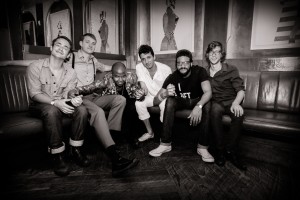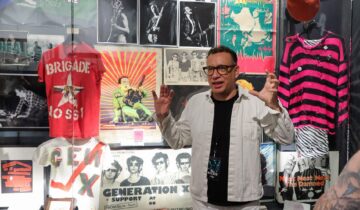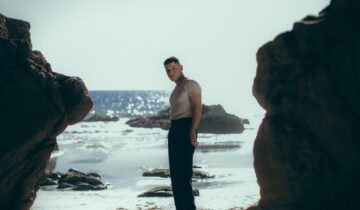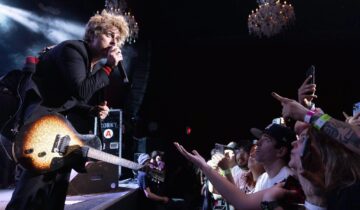 For SF WEEKLY: The song starts with a patter of drum taps. Then comes a guttural yawp from every member of the band. Then more taps, another yell, and the sequence starts anew.
For SF WEEKLY: The song starts with a patter of drum taps. Then comes a guttural yawp from every member of the band. Then more taps, another yell, and the sequence starts anew.
This is the 1927 jazz composition “Black and Tan Fantasy,” but not as Duke Ellington and Bubber Miley originally performed it. This is Sammy Miller and The Congregation’s 2015 version of the classic. And it works.
Supportive “wahoos” and “yeahs” reverberate from the audience as trumpeter Alphonso Horne blasts out melodic, bold phrases. No one in the audience is sitting because there’s no need for chairs at a Sammy Miller and The Congregation performance. This is not post-WWII cool jazz hiding behind a pair of Ray Ban Wayfarer sunglasses. This is feel-good party jazz, harking back to the ’20s and ’30s. It’s brassy, stomp your feet and dance music, and it’s got the raw, uplifting vibe of a New Orleans street parade.
“You used to see this happiness in early jazz and, somehow, we got away from it,” says 24-year-old Los Angeles native Sammy Miller, the group’s drummer and bandleader. “You hear joyfulness in all the old records, [and] we like being a part of that lineage.”
Miller formed The Congregation — a line-up of drums, guitar, piano, sousaphone, trumpet, trombone, and tenor and soprano sax — in 2014, after completing a master’s degree at Juilliard School of Music in New York. And although the band has only been around for a year (and released one EP, Say, Say, Say), they’re already making waves.
Lincoln Center named them an “Emerging Artist of the Year” for 2015, and Vanity Fair included them in “Jazz Youth-Quake,” a list of up-and-coming jazz artists. They also have a monthly, late-night residency at Lincoln Center where they try out new material — the most recent experiment was a barbershop quartet song played through a jazz filter.
“We take deep responsibility and try to present something meaningful every night,” Miller says. “We’re really trying to push ourselves.”
Education is important to Miller, which is why the band builds school performances into their touring schedule. Last month, they did a 15-day residency in schools throughout Los Angeles, where they taught students about the history of jazz and blues and instructed them on how to play various instruments. Teachers have emailed Miller to let him know that students who were at risk of dropping out got excited about learning music after the band’s visit.
Many of the innovations for which the band is renowned begin during rehearsals as jokes or asides that then morph into musical arrangements. For instance, their rendition of “Black and Tan Fantasy,” which ends with the theme song from 1970s sitcom Sanford and Son, came about because one of the musicians had the song stuck in his head. Miller says he is a proponent of experimentation and often advises musicians to “let their ears lead the way.” As a group, The Congregation has tackled everything from Stephen Foster’s 19th century parlor songs to Jelly Roll Morton’s ragtime classics to Whitney Houston’s singles.
“Nothing is too hokey,” Miller says. “If it sounds really good and it’s in the consciousness of America, it just gets assimilated. We’re not trying to be cute. That’s part of what Duke Ellington left us. Why would we stop pulling from other music like he did?”
But the real secret to the group may be The Rum House, a cocktail bar near Times Square. On Monday nights, Miller and other band members go there to watch jazz musicians, ranging in age from 60 to 80, play old-time rags until two in the morning. The experience is humbling and inspiring, Miller says, adding that it’s a great way “to hear that unmistakable style of [early] jazz.” Miller even brings along a tambourine and drumming brushes because there’s always a chance they’ll let him jump in for a set or two.
Image by Kassi Balli, courtesy of Sammy Miller and the Congregation



